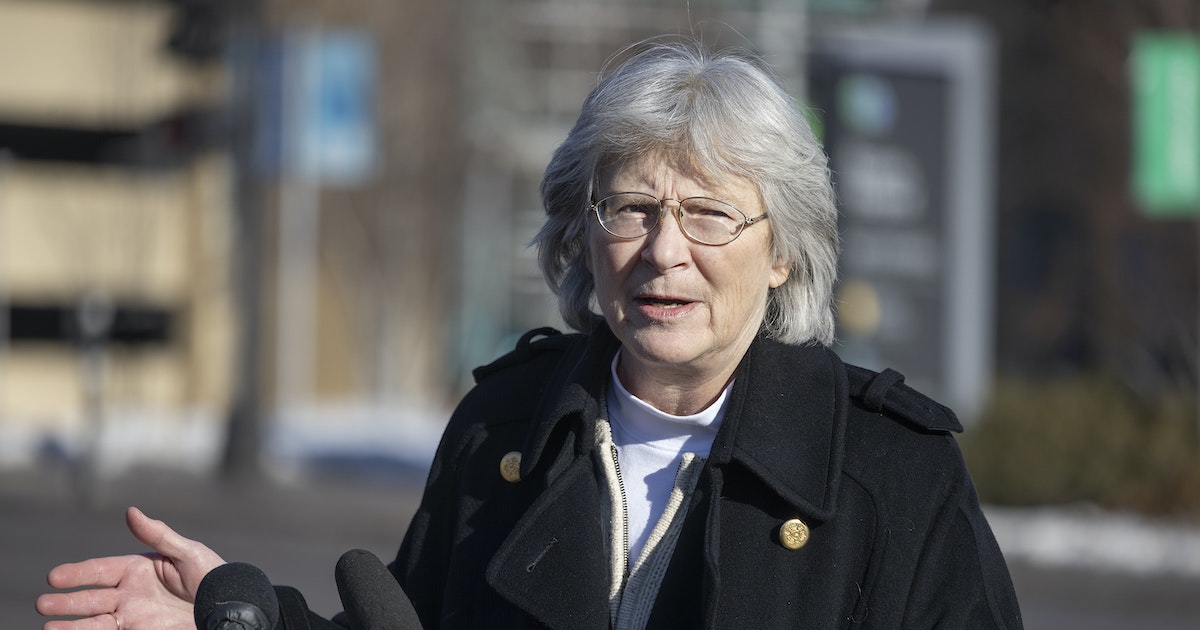Jan Malcolm hasn’t been afraid to be the heavyweight during the pandemic – urging people for months to reduce the risk of COVID-19 through the wearing of masks, social distancing and vaccinations.
Not much has changed for her in retirement.
The former Minnesota health commissioner will deliver one of her first public addresses since stepping down next week, emphasizing the importance of post-pandemic lessons – even if people are willing to forget about COVID- 19 now that the federal public health emergency is over.
“We are all beyond tired,” she said. “I can certainly understand the desire on the part of policy makers and leaders of organizations to just want to close the door and move on and not dwell on the difficulties of the past few years. This would not only be an opportunity terribly lost, but truly dangerous.”
Malcolm will focus less on Minnesota’s emergency response and more on chronic disease levels in its population and the fragmented health care system that left the state vulnerable in the first place. His April 19 speech is part of the first Whole Person Health Summit hosted by the University of St. Thomas in St. Paul.
“Every inequity that we know of and every gap or dysfunction in the health system…has been exacerbated tremendously by the pandemic,” Malcolm said.
The summit comes at a good time because the pandemic has revealed the consequences of poor overall health and the need for solutions, said MayKao Hang, founding dean of Morrison Family College of Health in St. Thomas. Rates of death and complications from COVID-19 were high among the same minority and low-income communities in Minnesota that cannot afford the healthy foods and activities that help improve physical, social, mental and spiritual health. .
“We’ve seen that magnified over the course of the pandemic with what I would say are the fault lines in society,” Hang said.
Adult obesity in Minnesota rose from 15% in 1999 to more than 30% in 2020 at the start of the pandemic, according to federal health surveys. The obesity rate then jumped above 32% in 2021, despite some people’s willingness to use downtime during the pandemic to improve their health.
“Some people, God bless them, have gotten into shape working from home and learning to cook and life is good,” Malcolm said. “Others of us have just sat in front of our computers for 18 hours a day and ruined our own health. And then of course there’s stress and just kind of a collective trauma – that’s not a inappropriate word for what many people have experienced in so many ways.”
Although Minnesota’s obesity rate is lower than the national average, it still set the state up for a more severe pandemic toll. Only 2,500 of the nearly 15,000 COVID-19 deaths in Minnesota involved people under the age of 65, but the majority had obesity or related conditions such as diabetes or hypertension listed on their death certificates. as complicating factors.
Low-income Minnesotans were particularly at risk because they worked in service-oriented jobs that couldn’t be done remotely and had higher rates of pre-existing health conditions. Minnesota’s obesity rate was 40% for adults with household incomes below $15,000 per year in 2021, but only 21% for adults with household incomes above $200,000.
Malcolm said one problem is that medical providers have always been paid to treat the consequences of obesity and other health conditions, rather than to prevent them. Insurers are gradually rewarding providers for keeping patients healthier and reducing medical costs, but Malcolm said community efforts are needed to help people afford healthy lifestyles that prevent problems in the first place.
Minnesota’s Statewide Health Improvement Partnership has funded thousands of efforts to improve health, such as farmer’s markets in neighborhoods that don’t have access to healthy, fresh, inexpensive foods. But Malcolm said successes are hard to replicate because there are no additional sources of funding to scale them up.
“We have all this good innovation and good work that never scales because it’s not really supported,” she said.
Malcolm retired in January after a second term as health commissioner, having served under Governor Jesse Ventura.
She said she needed time after her highly visible leadership of Minnesota’s pandemic response and to mourn the loss of her mother and wife. But she takes on volunteer roles, sits on the Morrison College advisory board, and wants to use the lessons of the pandemic to improve the state’s health and preparedness if another occurs.
“I’m probably the last person anyone wants to hear, insisting that we can’t just move on,” she said, “but I think there are pressing issues. And we’ve clearly seen the kind of interconnectedness between things” that results in better or worse health.



